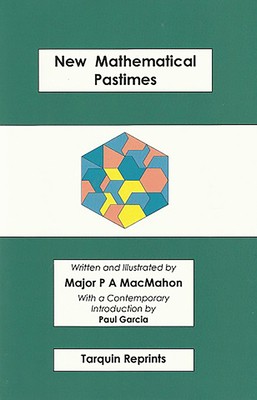
- We will send in 10–14 business days.
- Author: Percy Macmahon
- Publisher: TARQUIN GROUP
- ISBN-10: 1899618643
- ISBN-13: 9781899618644
- Format: 15.6 x 23.4 x 0.8 cm, minkšti viršeliai
- Language: English
- SAVE -10% with code: EXTRA
Reviews
Description
MacMahon set out to demonstrate the principles by which an interested reader, with some work and thought, could create his or her own amusements. It also contained a completely original approach to visual puzzles, where edge matching could be forced by altering the profiles of the edges. The results of these transformations are remarkably similar to work produced by Maurits Escher, and predate him by a decade and a half. As well as being important as a resource the subject is by no means exhausted.
EXTRA 10 % discount with code: EXTRA
The promotion ends in 22d.20:36:16
The discount code is valid when purchasing from 10 €. Discounts do not stack.
- Author: Percy Macmahon
- Publisher: TARQUIN GROUP
- ISBN-10: 1899618643
- ISBN-13: 9781899618644
- Format: 15.6 x 23.4 x 0.8 cm, minkšti viršeliai
- Language: English English
MacMahon set out to demonstrate the principles by which an interested reader, with some work and thought, could create his or her own amusements. It also contained a completely original approach to visual puzzles, where edge matching could be forced by altering the profiles of the edges. The results of these transformations are remarkably similar to work produced by Maurits Escher, and predate him by a decade and a half. As well as being important as a resource the subject is by no means exhausted.


Reviews